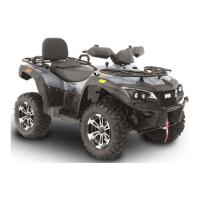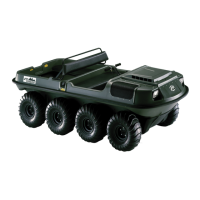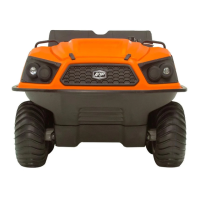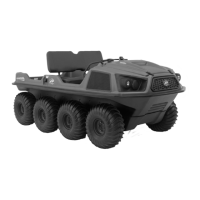60
Engine Coolant Reservoir
Coolant absorbs heat from the engine and transfers it to the air at the radiator. If the
coolant level becomes low, the engine overheats and may suer damage. Check
the coolant level each day before operating the ATV, and replenish coolant if the
level is low. Change the coolant in accordance with the Maintenance Schedule.
1. Fasteners
2. Front Cover
Coolant Level Inspection
1. Position the ATV on level ground.
2. Remove the two fasteners (1); then
remove the front cover (2).
WARNING
POTENTIAL HAZARD
Improper care when refueling.
WHAT CAN HAPPEN
Fuel can spill, which can cause a re and severe injury.
HOW TO AVOID THE HAZARD
Do not overll the fuel tank. Be careful not to spill fuel, especially on the engine or exhaust
pipe. Wipe up any spilled fuel immediately. Be sure the fuel tank cap is closed securely.
Do not refuel immediately after the engine has been running and is still very hot.
Operation - Before You Ride
3. Check the coolant level in the
coolant reservoir when the engine
is cold as the coolant level will vary
with the engine temperature. The
coolant level should be between
the minimum and maximum marks.
4. If the level is low, remove the
coolant reservoir cap and add
coolant or distilled water to raise it
to the specied level.
NOTE: If water is added, have an
ARGO dealer check the antifreeze
content of the coolant as soon as
possible.
The radiator fan operation is
completely automatic. It is switched
on or o according to the coolant
temperature in the radiator.
1. Coolant Reservoir Cap
2. Maximum Level Mark
3. Minimum Level Mark
Hard water or salt water is harmful to the engine. You may use distilled water if soft
water is not available.
CAUTION
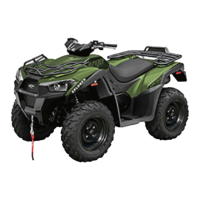
